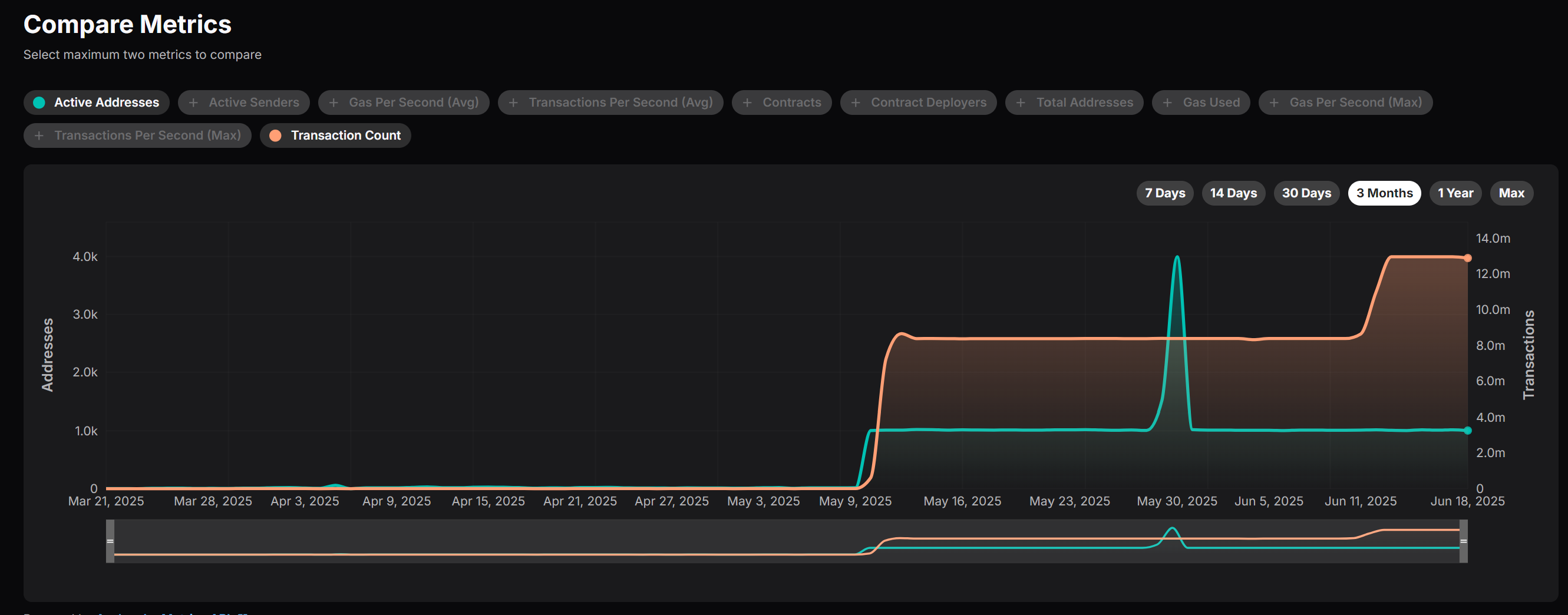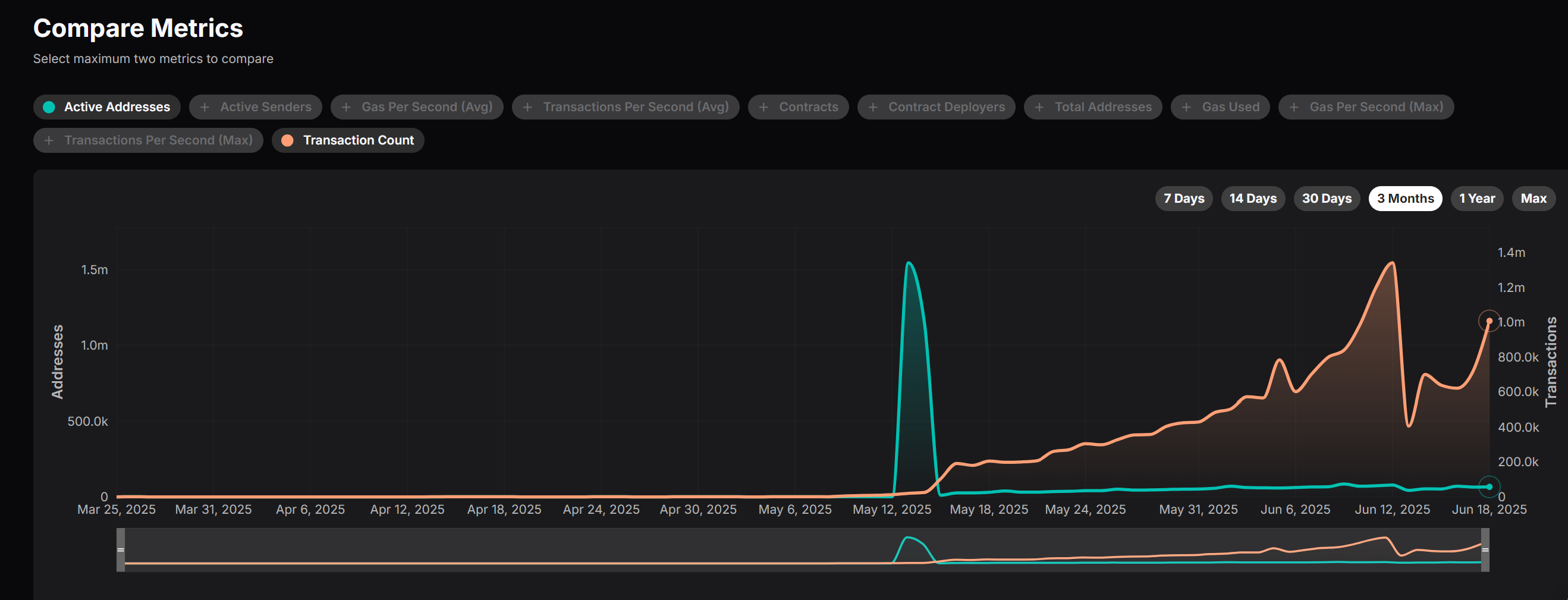
Avalanche saw a major spike in on-chain activity this May, reaching over 19 million transactions per day. That is more than six times higher than its usual 3–4 million daily transactions earlier this year.

This increase is mostly due to how Avalanche works. It is built in a modular way, meaning there is a main chain (called the C-Chain) and many custom blockchains called Subnets. Developers can create their own Subnets using AvaCloud, a service that handles the technical setup for them, like validators and infrastructure.
Each Subnet runs on its own rules, like gas fees and how many transactions it can handle. But even though they work separately, they are still connected to the main Avalanche network. This connection lets users move assets—like tokens or NFTs—between Subnets and other Avalanche apps.
Coqnet's Bots
Most of the recent activity has come from one Subnet called Coqnet. It is a new chain launched by the Coq Inu memecoin community. In just a short time, it went from 3,000 to nearly 13 million transactions per day. That is around 67% of all transactions happening on Avalanche right now. Coqnet is being promoted as a chain for memecoins, games, and dApps.

However, the numbers raise some questions. Coqnet only has about 1,000 active addresses, yet it is producing around 12 million transactions daily. That works out to 12,000 transactions per user per day—very unlikely for normal users. On top of that, there are only a few apps live on the chain. This suggests the activity might be boosted artificially, either to test the chain’s capacity or to attract attention.
MapleStory on Henesys
Meanwhile, some Subnets are growing more naturally. Take Henesys, for example. It launched in May as part of MapleStory Universe, a Web3 spin on the classic game MapleStory. Since then, Henesys has hit about a million transactions a day, with over 60,000 active accounts.

The game maintains the classic 2D style of the original but introduces new elements like on-chain items, NFTs, and an economy run by the players. Players can go on quests, battle monsters, and trade items that hold real value. The main aim is to give players genuine ownership of their in-game possessions.
So far, the launch has gone well. The game has over 60,000 daily active users and more than 157,000 on-chain characters. During its first NFT campaign on OpenSea, over 1 million items were minted, showing strong interest from the community.
Avalanche's C-Chain
Not only Subnets are growing, but Avalanche’s main C-Chain is also seeing more activity. Since May, daily transactions there have increased from 300,000 to over 1 million. This growth is partly because of the Subnets, but also due to new apps launching directly on the C-Chain.
What this tells us is that Avalanche’s modular design is actually working. Developers seem to enjoy being able to build custom chains. And when you look at projects like Henesys, it is obvious you can launch some pretty big Web3 apps on Avalanche.
And Avalanche isn’t stopping there. The team recently announced that FIFA will also launch its own chain on Avalanche. The new FIFA blockchain will host its existing NFT collections, which are moving over from Algorand and Polygon, and will focus on fan experiences.
Avalanche says its technology can handle huge events like the World Cup, which draws billions of fans. FIFA originally planned to build on an Ethereum-compatible chain but switched to Avalanche because it offers better speed and scalability.
All in all, Avalanche is moving forward. Some of the recent activity might be pushed up, but projects like Henesys and FIFA show real interest and real use. The network is gaining traction, and more teams are starting to pay attention.

